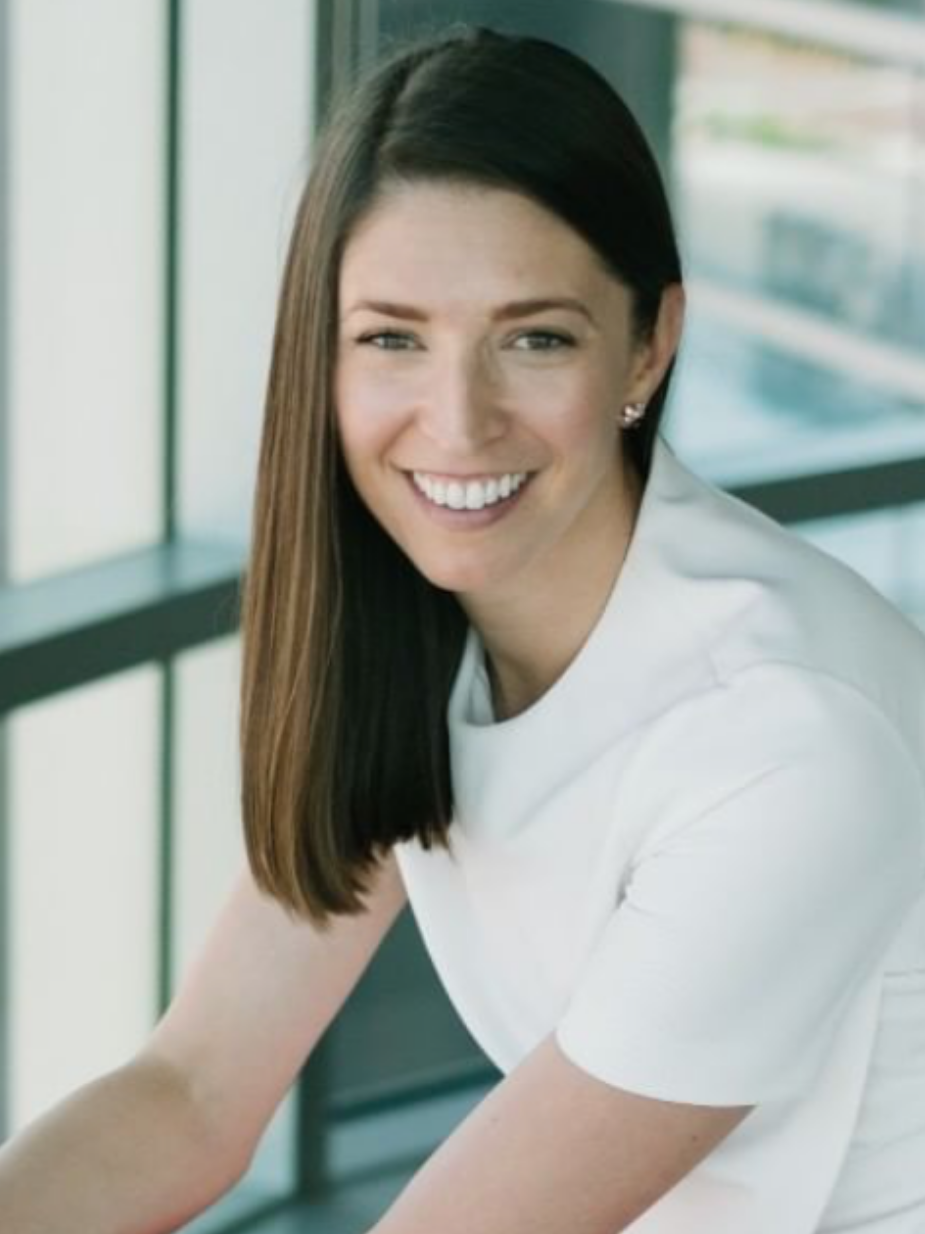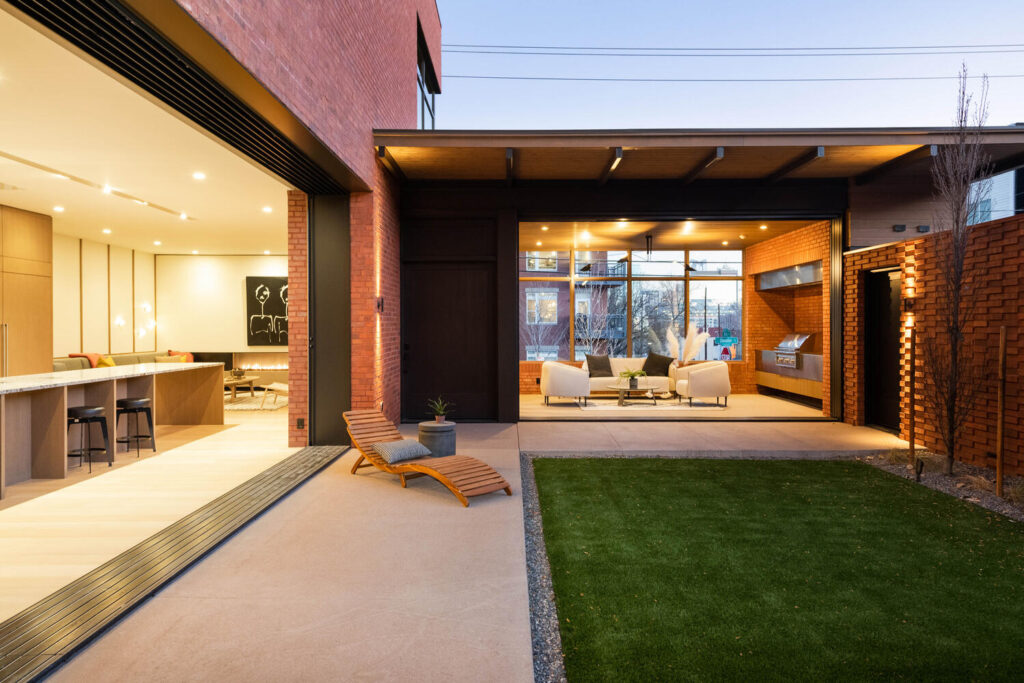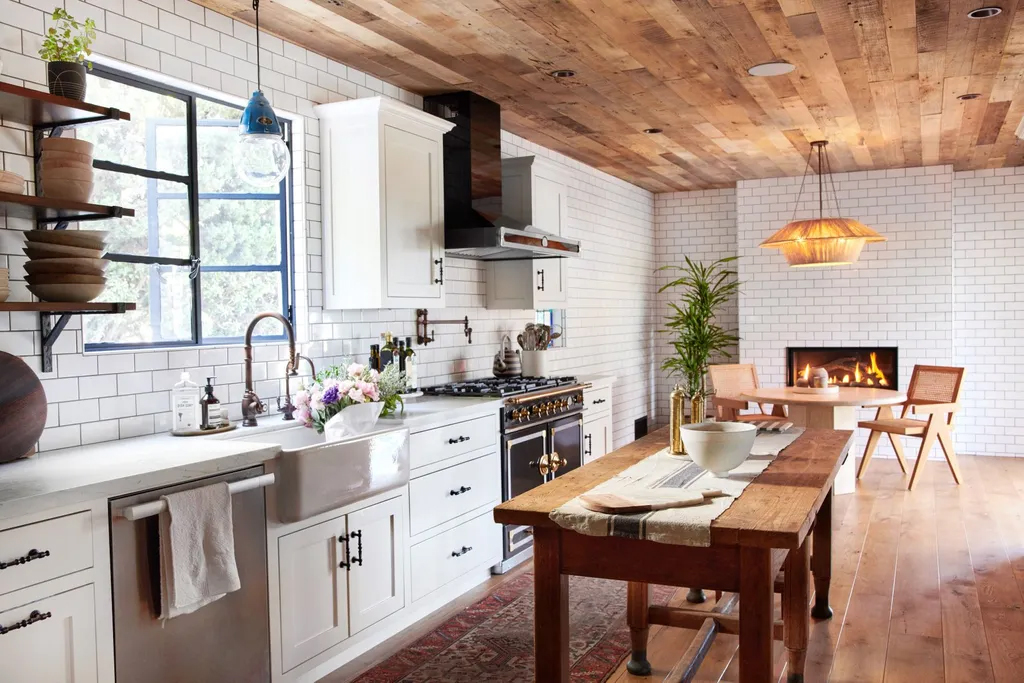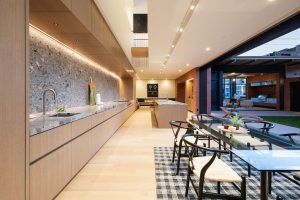Interior design has long been a top consideration for luxury buyers—and recently, interior architecture has moved up the list of buyer priorities. The reason is simple: as more people work remotely, shop via digital channels, and spend large amounts of time in their homes, layouts, features, and functionality are as essential as aesthetics.
What exactly is the difference between interior architecture and interior design? Interior design primarily focuses on the “software” of the home—elements such as wall colors or furnishings that are typically added by the homeowner and easy to change. Interior architecture, on the other hand, encompasses the home’s “hardware”—the built environment that determines what each space is for and how different spaces work together.
Interior architecture isn’t necessarily permanent. Homeowners transform their living spaces all the time, though this tends to be a larger project involving structural, electrical, and plumbing infrastructure. As such, a home’s interior architecture doesn’t always match the exterior architecture.

TJ Paradise
“I have a client who recently bought a warm Mediterranean-looking property with lots of originality on the outside, but that has been taken to the studs and made ultra-modern and minimalistic on the inside,” says TJ Paradise, a top-producing agent with Sotheby’s International Realty – Sunset Strip Brokerage.
What are luxury clients looking for in their ideal homes? “Buyers have gotten very savvy over the last few years,” says Paradise. “This is partly because they’ve been exposed to a lot of diverse architecture and design elements. Many of my buyers are attracted to fixtures that look like art installations, organic elements that bring the outdoors in, black steel window and door frames, and durable hardwood floors, such as oak.”
Each of these elements are indicative of a broader set of changing client preferences. Let’s take a look at these four categories in detail to see what buyers are prioritizing.
1. Conversation starters are in
Mckinze Casey
“With the home being the focus of creativity—and because we’ve quite literally been looking at the same four walls since early 2020—buyers are drawn to homes with architectural details that excite them,” says Mckinze Casey, Global Real Estate Advisor at LIV Sotheby’s International Realty.
“Anything that sparks emotion in one’s space is dominating today’s trends, and many of our design-focused trophy homes include dramatic entryways, discussion-provoking fixtures, and exotic finishes that are generally found in swanky hotels or trendy restaurants,” she notes. “Having a space that excites you and has a story behind it is deeply popular today.”
In short, a sense of moderated maximalism is making a comeback in 2021, with clients appreciating flourishes that have character, boldness, and a hint of eccentricity. Agents can emphasize these elements in their listings to appeal to the discerning buyer.
2. Indoor-outdoor continuity tops the list
LIV Sotheby’s International Realty / AT Media
Access to outdoor spaces has become one of the biggest selling points for properties in the past year, and this factors into interior architecture in two ways: by incorporating fixtures and furnishings that look and feel natural, and by extending the comfort and practicality of interior living to the exterior of the home.
“Buyers remain focused on the extreme functionality of the outdoor space, and homes with multi-purpose outdoor areas are showing huge demand,” says Casey. “Imagine morning coffee on your balcony that faces the sunrise, hosting a dinner under the stars, and watching the Sunday game in your outdoor living room. It allows a pivot from the day.”
3. Buyers are appreciating more room(s)After several years of prevalence, the era of the open concept has come to a tentative end. While buyers don’t necessarily want their homes to feel closed off, they have rediscovered the need for privacy, and place renewed value on being able to separate their work, school, and family lives. Doors are on trend, and as Paradise notes, dark colors and materials add personality while helping to firmly demarcate spaces within the home.
“I’m noticing a spark in buyer’s eyes when they see bright, sunshiny spaces to let optimism pour in—but they also love cozy, activity-specific rooms with moody decor,” adds Casey. “The combination allows for a change in tone throughout the day.”
Paradise has observed demographic differences can influence whether clients are looking for a closed or open floor plan.“Younger buyers want more open-concept living—a kitchen that flows into a family room that opens onto the pool, for example; whereas the older demographic seems to appreciate homes that haven’t been opened up into one large space.”
“It’s important to know what’s driving decisions for the buyers you’re most likely to represent, as you’ll see different needs from a 25-year-old in their first condo and an executive relocating from overseas,” agrees Casey.
4. Choosing practical over flawless
Sotheby’s International Realty – Sunset Strip Brokerage
Finally, clients are no longer only enjoying their homes in the evening after a long day at the office. Having floors and surfaces that can weather the wear and tear of everyday life, and that can embrace imperfection, is crucial now in ways it wasn’t before. Functionality has truly become a thing of beauty.
But, as Paradise is quick to point out, no two clients are the same. “There’s nothing like exploring homes with your buyers and seeing how they respond to different finishes and designs; you can learn a lot about what they like and dislike immediately when you walk into a space.”
He encourages agents to actively take notes as their clients comment on a property. “You’d be surprised at how impressed buyers are when you can recite word for word what they said. And after showing a few houses, you should be able to have a clear understanding of what that particular buyer wants in their new home.”
So when helping your buyers vet potential properties, remember the importance of interior architecture, and take inspiration from your listings—and your clients—to help find the perfect fit. As Casey says, “The best way to remain valuable is to be a constant student in every facet of this business.”
Source: click here
















